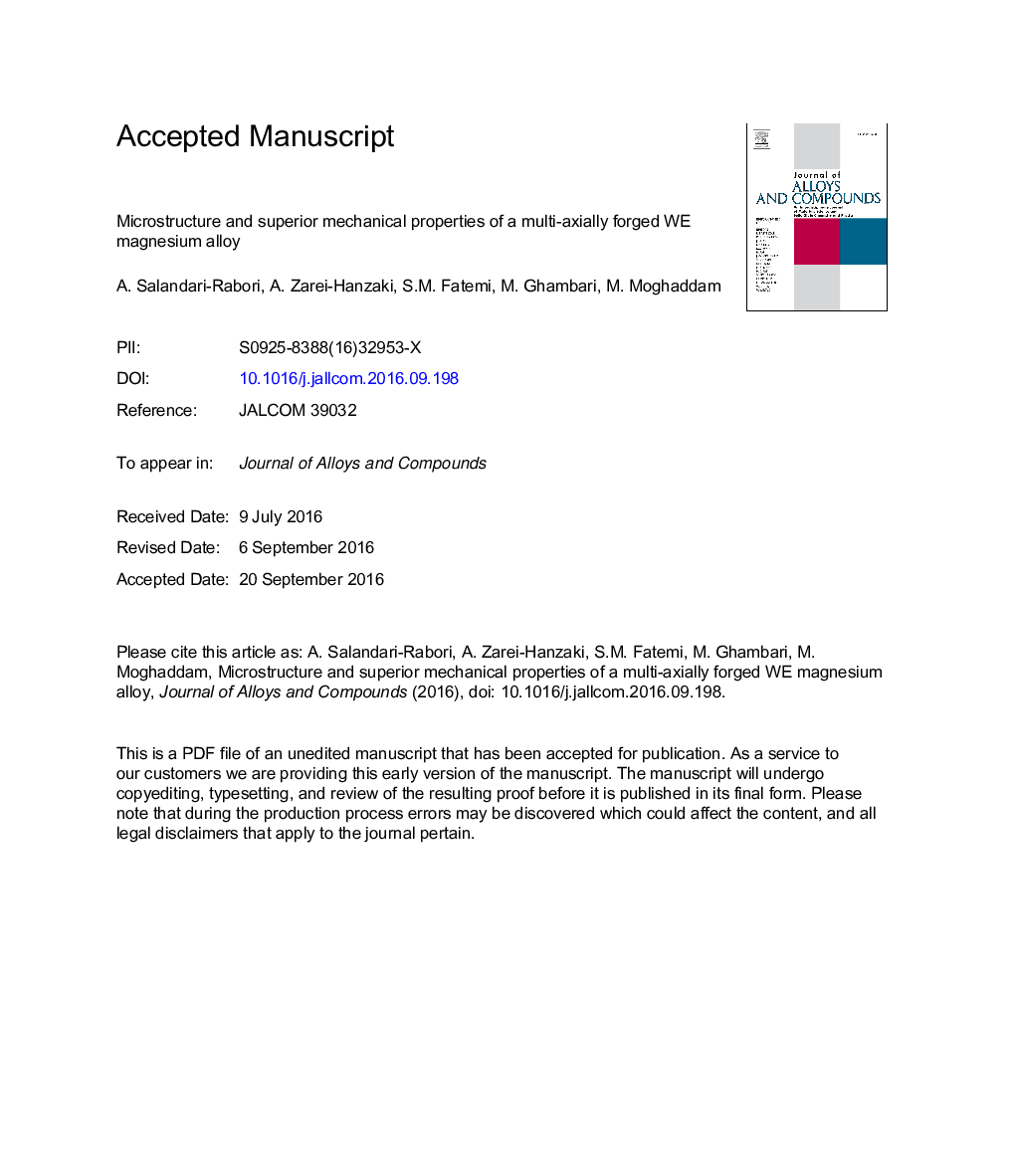| Article ID | Journal | Published Year | Pages | File Type |
|---|---|---|---|---|
| 5461023 | Journal of Alloys and Compounds | 2017 | 34 Pages |
Abstract
A magnesium alloy containing rare earth elements (Y and mish metals) was severely deformed through multi-axial forging (MAF) at 400 °C and the obtained microstructure, texture, and mechanical properties were characterized after applying successive MAF passes. The results showed that the volume fraction of the recrystallized grains was noticeably increased by increasing the MAF passes, where a homogeneous microstructure with a mean grain size of 4.8 μm was obtained after five MAF passes. A strengthened basal texture was developed after the first MAF pass. Further deformation to three and five MAF passes resulted in a texture weakening, where pyramidal planes tend to rotate parallel to the forging direction. The contribution of particle stimulated nucleation (PSN) was suggested to play an effective role in the texture weakening. The basal texture and grain refinement, which were achieved after applying one pass MAF, led to a combined improvement in strength and ductility, including 460 MPa ultimate strength and 12.4% ductility. As the number of deformation passes increased to three and five, the flow stress of the material was reduced, while the ductility considerably enhanced. The latter findings were discussed relying on the fact that the texture weakening after multi-pass MAF could make the deformation easier through activating more slip systems.
Related Topics
Physical Sciences and Engineering
Materials Science
Metals and Alloys
Authors
A. Salandari-Rabori, A. Zarei-Hanzaki, S.M. Fatemi, M. Ghambari, M. Moghaddam,
